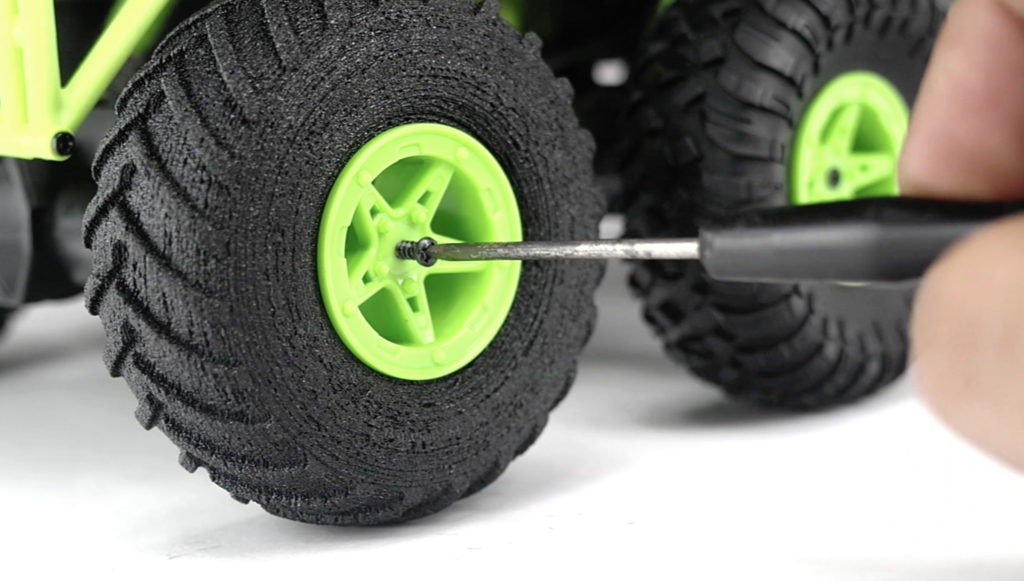Italian filament producer TreeD is treading new ground with its new PNEUMATIQUE 3D printing filament. The new material is derived from recycled rubber tires and offers similar qualities to the original material in terms of strength and flexibility.
Though they are a daily part of our lives and may seem innocuous, rubber tires are actually a significant source of waste on the planet and have posed significant ecological challenges in terms of disposal. It is only in recent decades that waste tires have been made recyclable, and they’ve been put towards a range of applications, from asphalt manufacturing and eco-friendly construction to fuel production.
Now, thanks to TreeD and Swiss company Tyre Recycling Solutions (TRS), makers will soon be able to 3D print objects made from recycled rubber tires. TreeD’s new PNEUMATIQUE material is suitable for a range of applications, including printing small-scale tires for R/C cars or vehicle models, producing shock-absorbing and highly supportive soles for shoes and much more.
The wide range of uses for the new 3D printing filament are owed to the versatility of rubber—a material which brings elasticity, durability and resistance together in a unique way. The filament, for its part, aims to enhance and improve upon the recycled rubber’s performance by optimizing wear-resistance and improving elastic memory.

But how exactly does a used rubber tire become a 3D printable filament? Let’s go through it. Using a proprietary process, TRS is capable of separating the various components of a tire (including the rubber, tape and steel wires). With the rubber material isolated, it is then cut into manageable strips and subsequently shredded and turned into a powdery substance.
Next, a polymer material is added to the rubber powder to create the PNEUMATIQUE compound. The addition of the polymer allows for the material to maintain the rubber’s properties while also enabling it to be processed into a filament form. In other words, because rubber from tires is vulcanized and cannot return to its initial state, the polymer enables it to be reused.
With the rubber-polymer composite, TRS and TreeD then extrude the innovative PNEUMATIQUE filament, which is made up of the highest percentage of rubber possible (over 20%) in order to ensure a recycled material while also maintaining printability.

From a technical perspective, PNEUMATIQUE filament boasts a Shore A hardness of 80, exceptional layer adhesion properties and good abrasion-resistance. The filament’s matte finish and deep black-gray color, along with its slightly rough (anti-grip) texture are reminiscent of actual rubber tires.
When printing, TreeD recommends using a print temperature of between 190 and 230°C and a print speed of between 20 and 40 mm/s. Makers might notice the distinct odor of rubber during the printing process, but that is to be expected says the company. Once a print is complete, TreeD also suggests using a cleaning filament to clear the printer’s extruder.

Since its founding in 2014, TreeD has remained committed to the development and manufacturing of environmentally conscious 3D printing filaments. Its current portfolio consists of the Carbonium line of filaments, its Healthfil filaments for orthopedic applications, a range of architectural, technical, flexible filaments and more. Thanks to its recent collaboration with TRS, the Italy-based company can now add PNEUMATIQUE to its long roster of quality 3D printing filaments.





